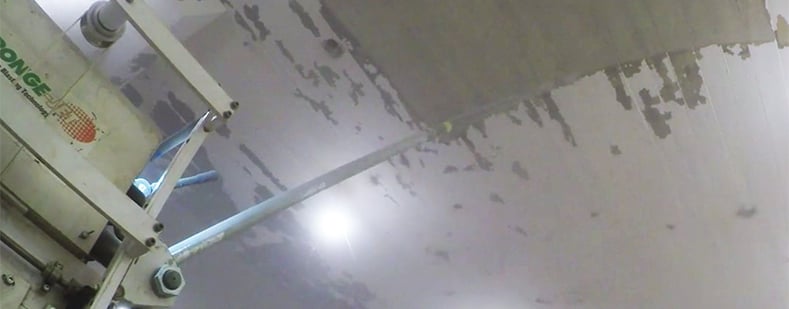Robotic abrasive blasting is a great choice for projects in a wide variety of industries, including oil and gas, water and wastewater, the marine industry, and power generation plants. However, it is important to keep in mind that it is not just the industry itself, but also the application that determines whether robotic abrasive blasting is the right fit for a particular job.
Blasting and Profiling Pipe and Tank Interiors
Applications such as pipe and tank interiors are excellent examples of projects where robotic abrasive blasting is best suited. “The reason for wanting to use a robot for these applications is two-fold. One, it is more efficient than manual blasting, saving both time and money. And two, the coating being removed from these areas may contain hazardous substances, such as lead or radioactive materials. The use of a robot to remove materials like this greatly reduces the number of man hours of exposure to these hazards,” explained Ed Zaharias, senior manager of Sponge-Jet.
Reduced Confined Space Entry
Jobs that require confined space entry are prime candidates for robotic abrasive blasting. Reducing man hours in a confined space needs to be a top priority for all blasting contractors. “While trips and falls are the number one cause of work-related injuries, confined spaces is the number one factor in worker deaths,” stated Zaharias. Robotically blasting in confined spaces will reduce man hours by 60-90%, thus creating a much safer work environment.
Solution for Small (and Large) Diameter Pipes
Small diameter pipes present a unique challenge to blasters. “It is very difficult for someone to work in a pipe with a diameter of 48-inches or less, and in some instances, the pipe in question is too small to fit anyone at all,” said Zaharias. Robotic abrasive blasting solves this issue, as it is the robot, not a human that is entering the confined space, allowing for greater and safer access.
Alternatively, large diameter pipes come with their own set of challenges. “Once you get to diameters of 12-feet or more, if you are manually blasting, you have to start thinking about erecting scaffolding to blast the top of the pipe interior. This is very expensive and labor intensive,” explained Zaharias. Robotic blasting units can also blast up or down grades that prove challenging for a worker doing the blasting by hand.
A robot can blast 6.5 to 8.5 times faster than a single person manually blasting. This significantly increases efficiency when blasting pipe interiors, regardless of diameter.
Increased Versatility
Overall, robotic abrasive blasting not only increases efficiency and worker safety, but also provides a great deal of job site versatility and adaptability. “Sponge-Jet’s Robotica was originally designed for blasting pipe internals. This same robot has since moved into the tank market, and has been adapted for blasting flat walls, ceilings, and floors,” stated Zaharias. In addition, the Robotica can successfully operate up to 2,000 feet away from the feed unit and maintain effective operating blast pressures over that distance.









